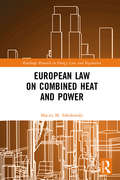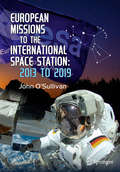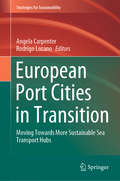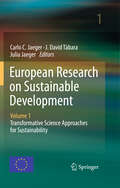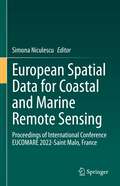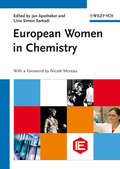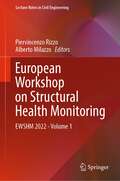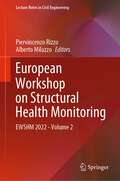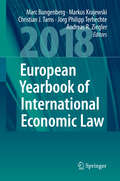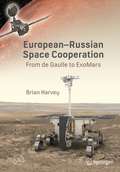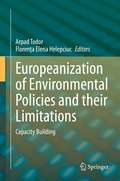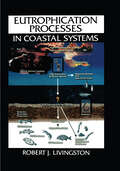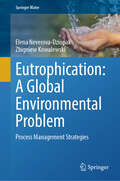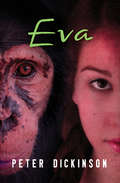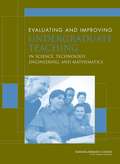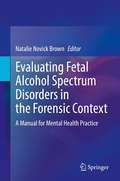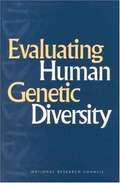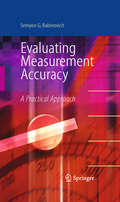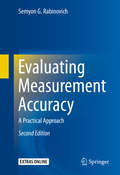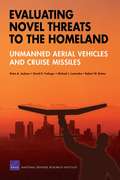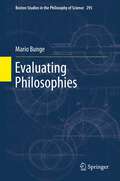- Table View
- List View
European Law on Combined Heat and Power (Routledge Research in Energy Law and Regulation)
by Maciej M. SokołowskiThis book provides an analysis of the European policy approach to combined heat and power (CHP), a highly efficient technology used by all EU Member States for the needs of generating electricity and heat. European Law on Combined Heat and Power carries out an assessment of the European legal and policy measures on CHP, evaluating how it has changed over the years through progress and decline in specific member states. Over the course of the book, Sokołowski explores all aspects of CHP, examining the types of measures used to steer the growth of cogeneration in the EU and the policies and regulatory tools that have influenced its development. He also assesses the specific role of CHP in the liberalisation of the internal energy market and EU action on climate and sustainability. Finally, by delivering his notions of "cogenatives", "cogenmunities", or "Micro-Collective-Flexible-Smart-High-Efficiency cogeneration", Sokołowski considers how the new EU energy package – "Clean energy for all Europeans" – will shape future developments. This book will be of great interest to students and scholars of energy law and regulation, combined heat and power and energy efficiency, as well as policy makers and energy experts working in the CHP sector.
European Missions to the International Space Station: 2013 to 2019 (Springer Praxis Books)
by John O'SullivanThe European Space Agency has a long history of human spaceflight, working with both NASA and the Soviet/Russian space agencies over the years. This book tells the story of the ESA astronauts who have visited the International Space Station and their contributions to its development and success.For example, ESA built the Columbus science laboratory, as well as the Cupola, the Leonardo PMM and the ATV supply ship. But it is the human endeavor that captures the imagination. From brief visits to six-month expeditions and spacewalking to commanding Earth’s only outpost in space and doing experiments, ESA astronauts – whose personal stories are also told – have played a vital role in the international project. Many of their efforts are documented in photographs in the book.In following up on the missions covered in this author’s earlier title, In the Footsteps of Columbus (2016), this book highlights European missions from the 2013 Volare mission of Luca Parmitano to his 2019 Beyond mission and includes first flights for Alexander Gerst, Samantha Cristoforetti, Andreas Mogensen, Tim Peake, and Thomas Pesquet.
European Port Cities in Transition: Moving Towards More Sustainable Sea Transport Hubs (Strategies for Sustainability)
by Angela Carpenter Rodrigo LozanoSeaports, as part of urban centers, play a major role in the cultural, social and economic life of the cities in which they are located, and through the links they provide to the outside world. Port-cities in Europe have faced significant change, first with the loss of heavy industry, emergence of Eastern European democracies, and the widening of the European Community (now European Union) during the second half of the twentieth century, and more recently through drivers to change including the global Sustainable Development Agenda and the European Union Circular Economy Agenda.This book examines the role of modern seaports in Europe and consider how port-cities are responding to these major drivers for change. It discusses the broad issues facing European Sea Ports, including port life cycles, spatial planning, and societal integration. May 2019 saw the 200th anniversary of the first steam ship to cross the Atlantic between the US and England, and it is just over 60 years since the invention of the modern intermodal shipping container – both drivers of change in the maritime and ports industry. Increasing movements of people, e.g. through low cost cruises to port cities, can play a major role in changing the nature of such a city and impact on the lives of the people living there. This book brings together original research by both long-standing and younger scholars from multiple disciplines and builds upon the wider discourse about sea ports, port cities, and sustainability.
European Research on Sustainable Development
by J. David Tàbara Carlo C. Jaeger Julia JaegerThis book provides the reader with a state-of-the-art view of research on sustainable development. Its emphasis lies on the transformative dimension of this research: sustainable development can only be realized through a far-reaching transformation of the situation humankind finds itself in at the beginning of the third millennium. The contributions are written by leading world experts in the conceptualisation and actual practice of sustainable development. The book provides a timely overview of ideas and methods as well as a variety of original learning examples on the most innovative approaches on sustainability science.
European Spatial Data for Coastal and Marine Remote Sensing: Proceedings of International Conference EUCOMARE 2022-Saint Malo, France
by Simona NiculescuThis volume presents full paper contributions from the International Conference of European Spatial Data for Coastal and Marine Remote Sensing (EUCOMARE) 2022, with the support of the ERASMUS+ Programme of the European Union, held in Saint Malo, France. EUCOMARE aims to promote academic and technical exchange on coastal related studies including coastal environmental and socio-economic issues, with the use of European remotely sensed data. The book is an excellent resource for scientists, engineers, and programme managers eager to learn about the recent developments and achievements in the field of remote sensing applications on marine and coastal areas. Readers will learn about recent advances in sensors' radiometric, spatial, temporal and spectral resolution, as well as new data processing approaches in remote sensing for monitoring and mapping the various characteristics of marine, coastal and aquatic systems.
European Union Health Law (Law in Context)
by Tamara K. Hervey Jean V. McHaleA contextual analysis of the internal logics of EU health law through four themes: consumerism; (human) rights; interactions between equality, solidarity and competition; and risk. Leading authors in the emergent field explain the interactions and implications of EU health law through thematic reinterpretation of the law in context in key substantive areas, such as the regulation of health research, access of patients to high quality care, health care professional regulation, organisation and funding of health care services, and public health. This book offers a fresh perspective and thorough understanding of EU health law through individual and collective or systemic perspectives, and covers health law both within the EU and globally. Essential reading for anyone interested in health law in any EU Member State or in global health law. First major study to conceptualise EU health law through its own terms, rather than those of health law or EU law. Structured around four themes which provide analytical focus and understanding of 'what is the law?' whilst considering the implications in various contexts. Easy to navigate quick reference guide which provides brief answers to the authors' 40 questions posed in the introduction.
European Women in Chemistry
by Jan Apotheker Livia Simon Sarkadi"I have no dress except the one I wear every day. If you are going to be kind enough to give me one, please let it be practical and dark so that I can put it on afterwards to go to the laboratory", said Marie Curie about her wedding dress. According to her lecture notes, Gertrude B. Elion is quoted a few decades later: "Don't be afraid of hard work. Don't let others discourage you, or tell you that you can't do it. In my day I was told women didn't go into chemistry. I saw no reason why we couldn't." These two quotations from famous, Nobel Prize winning chemists amply demonstrate the challenges that female scientists in the past centuries have had to overcome; challenges that are still sometimes faced by the current generation. They "must have the noblest courage, quite extraordinary talents and superior genius" wrote Carl Friedrich Gauss 1807 in a letter to mathematician Sophie Germain. For the official book to celebrate the International Year of Chemistry, the European Association for Chemical and Molecular Sciences (EuCheMS) has chosen one of the central goals of the International Year: the contribution and role of women in chemistry. This celebration, which is the focus of European Women in Chemistry, takes us on a journey through centuries of chemical research, focusing on the lives of those amazing women from ancient times to the current day who dared to study this subject, often against advice or societal expectations. These portraits emphasize the extraordinary path and personality of these fascinating women, their major contribution to chemistry, but all in the context of their time and social environment. Some of these women, like Marie Curie and Dorothy Crowfoot Hodgkin, are famous and still well-known today. Others have contributed significantly to the development of science and lived an exceptional life, but are nowadays almost forgotten. This book is a tribute to all of them and a motivation for new generations to come to tread new paths, fight for unusual ideas and control one?s own destiny.
European Workshop on Structural Health Monitoring: EWSHM 2022 - Volume 1 (Lecture Notes in Civil Engineering #253)
by Piervincenzo Rizzo Alberto MilazzoThis volume gathers the latest advances, innovations, and applications in the field of structural health monitoring (SHM) and more broadly in the fields of smart materials and intelligent systems, as presented by leading international researchers and engineers at the 10th European Workshop on Structural Health Monitoring (EWSHM), held in Palermo, Italy on July 4-7, 2022. The volume covers highly diverse topics, including signal processing, smart sensors, autonomous systems, remote sensing and support, UAV platforms for SHM, Internet of Things, Industry 4.0, and SHM for civil structures and infrastructures. The contributions, which are published after a rigorous international peer-review process, highlight numerous exciting ideas that will spur novel research directions and foster multidisciplinary collaboration among different specialists.
European Workshop on Structural Health Monitoring: EWSHM 2022 - Volume 2 (Lecture Notes in Civil Engineering #254)
by Piervincenzo Rizzo Alberto MilazzoThis volume gathers the latest advances, innovations, and applications in the field of structural health monitoring (SHM) and more broadly in the fields of smart materials and intelligent systems, as presented by leading international researchers and engineers at the 10th European Workshop on Structural Health Monitoring (EWSHM), held in Palermo, Italy on July 4-7, 2022. The volume covers highly diverse topics, including signal processing, smart sensors, autonomous systems, remote sensing and support, UAV platforms for SHM, Internet of Things, Industry 4.0, and SHM for civil structures and infrastructures. The contributions, which are published after a rigorous international peer-review process, highlight numerous exciting ideas that will spur novel research directions and foster multidisciplinary collaboration among different specialists.
European Yearbook of International Economic Law 2018 (European Yearbook of International Economic Law #9)
by Markus Krajewski Jörg Philipp Terhechte Marc Bungenberg Andreas R. Ziegler Christian J. TamsVolume 9 of the EYIEL focusses on natural resources law understood as a special area of international economic law. In light of increasing conflicts over access to and the use of natural resources and of their impact on political, social and environmental aspects, the contributions of this volume analyse to which extent international economic law can contribute to the sustainable exploitation, management and distribution of natural resources. The volume collects contributions on general principles of natural resources law, the importance of natural resources for trade, investment and European economic law as well as analyses of particular sectors and areas including fracking, timber, space and deep seabed mining and natural resources in the arctic region.In its section on regional developments, EYIEL 9 addresses two regional integration systems which are usually not at the centre of public interest, but which deserve all the more attention due to their special relations with Europe: The Eurasian Economic Union and the Caribbean Community (CARICOM). Further EYIEL sections address recent WTO and investment case law as well as developments at the IMF. The volume also contains review essays of important recent books in international economic law and other aspects of international law which are connected to international economic relations.The chapter "Sovereignty, Ownership and Consent in Natural Resource Contracts: From Concepts to Practice" by Lorenzo Cotula is open access under a CC BY 4.0 license via link.springer.com.
European-Russian Space Cooperation: From de Gaulle to ExoMars (Springer Praxis Books)
by Brian HarveyThe story of European-Russian collaboration in space is little known and its importance all too often understated. Because France was the principal interlocutor between these nations, such cooperation did not receive the attention it deserved in English-language literature. This book rectifies that history, showing how Russia and Europe forged a successful partnership that has continued to the present day.Space writer Brian Harvey provides an in-depth picture of how this European-Russian relationship evolved and what factors—scientific, political and industrial—propelled it over the decades. The history begins in the cold war period with the first collaborative ventures between the Soviet Union and European countries, primarily France, followed later by Germany and other European countries. Next, the chapters turn to the missions when European astronauts flew to Russian space stations, the Soyuz rocket made a new home in European territory in the South American jungle and science missions were flown to study deep space. Their climax is the joint mission to explore Mars, called ExoMars, which has already sent a mission to Mars.Through this close examination of these European-Russian efforts, readers will appreciate an altogether new perspective on the history of space exploration, no longer defined by competition, but rather by collaboration and cooperation.
Europeanization of Environmental Policies and their Limitations: Capacity Building
by Arpad Todor Florenţa Elena HelepciucThis book offers a window into the mechanisms that drive events when countries with poor track records in environmental protection and low administrative capacity, join an organisation with ambitious environmental regulatory regimes, which include some of the highest environmental protections standards in the world.This book examines the institutional building capacity in Romania after two decades of the development of the EU's environmental policy on elaboration, transposition, implementation, monitoring and institutional building. The book examines how Romania has fared as one of the least environmentally friendly EU member states, and poses the following questions. What are the limits of Europeanisation in the area of public policies? What is the reason why, despite the overwhelming public interest in environmental issues, and widespread agreement that urgent action to protect the environment and prevent catastrophic climate change are paramount, the pace of achieving the goals is remains slow. Why do policies fail?This book brings together several case studies focusing on the evolution of environmental policies in Romania over the last twenty years, with a special focus on the post-accession period (2007 onwards). The book provides an analysis of policies, where progress is less than satisfactory, and examines why this is the case.
Eutrophication Processes in Coastal Systems: Origin and Succession of Plankton Blooms and Effects on Secondary Production in Gulf Coast Estuaries (CRC Marine Science)
by Robert J. LivingstonDerived from an unprecedented research effort covering over 31 years in a series of studies of 7 major river-estuaries, Eutrophication Processes in Coastal Systems presents a comprehensive and current review of the nature of the eutrophication process and how short- and long-term nutrient loading affects marine systems. This unique book is the culm
Eutrophication: Process Management Strategies (Springer Water)
by Elena Neverova-Dziopak Zbigniew KowalewskiThis book critically analyzes the reasons for the lack of tangible success in preventing progressing eutrophication and its negative effects as a global environmental problem without a clear solution until now. Particular attention of the authors will be paid to the currently existing approaches to setting the ecological standards for the nutrients content in surface waters and wastewater, the appropriate selection of wastewater treatment technology, the issues of monitoring and trophic status assessment, and the approach to managing this process. Also, the book provides a proposed systemic approach to managing the eutrophication process to mitigate its dangerous ecological, economic, and social effects and to preserve the biospheric functions of aquatic ecosystems.The target audience for this book - a wide range of specialists in water management and protection, water-and-wastewater technologies, and spatial planning, as well as lawyers and economists for environmental protection, medical workers, upper undergraduate students, postgraduate students, researchers and stakeholders.
Eutrophication: causes, consequences and control
by Gill Sarvajeet Singh Guy R. Lanza Abid A. Ansari Walter RastEutrophication continues to be a major global challenge to water quality scientists. The global demand on water resources due to population increases, economic development, and emerging energy development schemes has created new environmental challenges to global sustainability. Eutrophication, causes, consequences, and control provides a current account of many important aspects of the processes of natural and accelerated eutrophication in major aquatic ecosystems around the world. The connections between accelerated eutrophication and climate change, chemical contamination of surface waters, and major environmental and ecological impacts on aquatic ecosystems are discussed. Water quality changes typical of eutrophication events in major climate zones including temperate, tropical, subtropical, and arid regions are included along with current approaches to treat and control increased eutrophication around the world. The book provides many useful new insights to address the challenges of global increases in eutrophication and the increasing threats to biodiversity and water quality.
Eva
by Peter DickinsonEva's hospital room looks out onto the skyscrapers of a huge city, but since waking up from her coma she only dreams of trees <P><P> Thirteen-year-old Eva opens her eyes to find herself in a hospital, her body paralyzed while it heals from a devastating accident. Her mother says that Eva will be able to move her hands and face soon and that everything is going to be fine, but something in her voice tells Eva it's not that simple. The doctors give Eva a keyboard that turns her typing into speech and controls a mirror that rotates to look around the room and out the window--every direction except back at her bed. What are the doctors trying to hide from her? And why, in an overpopulated world where humans have tamed all the wild places, does Eva keep dreaming of a forest she's never seen?<P> Winner of Pacific Northwest Library Association’s Young Reader’s Choice Senior Award
Eva
by Peter DickinsonEva&’s hospital room looks out onto the skyscrapers of a huge city, but since waking up from her coma she only dreams of trees Thirteen-year-old Eva opens her eyes to find herself in a hospital, her body paralyzed while it heals from a devastating accident. Her mother says that Eva will be able to move her hands and face soon and that everything is going to be fine, but something in her voice tells Eva it&’s not that simple. The doctors give Eva a keyboard that turns her typing into speech and controls a mirror that rotates to look around the room and out the window—every direction except back at her bed. What are the doctors trying to hide from her? And why, in an overpopulated world where humans have tamed all the wild places, does Eva keep dreaming of a forest she&’s never seen?This ebook features an illustrated personal history of Peter Dickinson including rare images from the author&’s collection.
Evaluating And Improving Undergraduate Teaching: In Science, Technology, Engineering, And Mathematics
by Technology Engineering Committee on Recognizing Evaluating Rewarding Developing Excellence in Teaching of Undergraduate Science MathematicsEconomic, academic, and social forces are causing undergraduate schools to start a fresh examination of teaching effectiveness. Administrators face the complex task of developing equitable, predictable ways to evaluate, encourage, and reward good teaching in science, math, engineering, and technology.Evaluating, and Improving Undergraduate Teaching in Science, Technology, Engineering, and Mathematics offers a vision for systematic evaluation of teaching practices and academic programs, with recommendations to the various stakeholders in higher education about how to achieve change.What is good undergraduate teaching? This book discusses how to evaluate undergraduate teaching of science, mathematics, engineering, and technology and what characterizes effective teaching in these fields.Why has it been difficult for colleges and universities to address the question of teaching effectiveness? The committee explores the implications of differences between the research and teaching cultures-and how practices in rewarding researchers could be transferred to the teaching enterprise.How should administrators approach the evaluation of individual faculty members? And how should evaluation results be used? The committee discusses methodologies, offers practical guidelines, and points out pitfalls.Evaluating, and Improving Undergraduate Teaching in Science, Technology, Engineering, and Mathematics provides a blueprint for institutions ready to build effective evaluation programs for teaching in science fields.
Evaluating Fetal Alcohol Spectrum Disorders in the Forensic Context: A Manual for Mental Health Practice
by Natalie Novick BrownThis book is intended for medical and mental health clinicians faced with the challenge of evaluating adolescents and adults in the legal context who may have a fetal alcohol spectrum disorder (FASD). Luminaries in their respective fields, the contributors to this book offer a range of expertise and perspectives regarding the forensic investigation of FASD: medical, psychological, psychiatric, criminal defense, prosecution, and the judiciary. The primary goal of the book is to provide medical and mental health clinicians with practical procedures that can be used in a variety of forensic and clinical settings. It includes protocols that have been used successfully in legal matters ranging from rights waiver and competency to capital murder and sexual offending. It not only provides detailed guidelines for interviewing birth mothers about the delicate topic of substance use during pregnancy but also introduces a methodology that can be used in the absence of exposure confirmation to arrive at a sound diagnostic conclusion through the process of differential diagnosis. Taken as a whole, the methodological procedures described by the contributors to the book serve as ‘best practices’ for comprehensive forensic mental health evaluation of potential FASD in juveniles and adult defendants as well as in victims.
Evaluating Human Genetic Diversity
by Committee on Human Genome DiversityThis book assesses the scientific value and merit of research on human genetic differences--including a collection of DNA samples that represents the whole of human genetic diversity--and the ethical, organizational, and policy issues surrounding such research. Evaluating Human Genetic Diversity discusses the potential uses of such collection, such as providing insight into human evolution and origins and serving as a springboard for important medical research. It also addresses issues of confidentiality and individual privacy for participants in genetic diversity research studies.
Evaluating Measurement Accuracy
by Semyon G. Rabinovich"Evaluating Measurement Accuracy" is intended for anyone who is concerned with measurements in any field of science or technology. It reflects the latest developments in metrology and offers new results, but is designed to be accessible to readers at different levels: meteorologists, engineers and experimental scientists who use measurements as tools in their professions, graduate and undergraduate students in the natural sciences and engineering, and technicians performing complex measurements in industry, quality control, and trade. The material of the book is presented from the practical perspective and offers solutions and recommendations for problems that arise in conducting real-life measurements. This inclusion is a notable and unique aspect of this title as complex measurements done in industry and trade are often neglected in metrological literature, leaving the practitioners of these measurements to devise their own ad-hoc techniques.
Evaluating Measurement Accuracy: A Practical Approach
by Semyon G. Rabinovich"Evaluating Measurement Accuracy, 2nd Edition" is intended for those who are concerned with measurements in any field of science or technology. It reflects the latest developments in metrology and offers new results, but is designed to be accessible to readers at different levels: scientists who advance the field of metrology, engineers and experimental scientists who use measurements as tool in their professions, students and graduate students in natural sciences and engineering, and, in parts describing practical recommendations, technicians performing mass measurements in industry, quality control, and trade. This book presents material from the practical perspective and offers solutions and recommendations for problems that arise in conducting real-life measurements. This new edition adds a method for estimating accuracy of indirect measurements with independent arguments, whose development Dr. Rabinovich was able to complete very recently. This method, which is called the Method of Enumeration, produces estimates that are no longer approximate, similar to the way the method of reduction described in the first edition removed approximation in estimating uncertainty of indirect measurements with dependent arguments. The method of enumeration completes addressing the range of problems whose solutions signify the emergence of the new theory of accuracy of measurements. A new method is added for building a composition of histograms, and this method forms a theoretical basis for the method of enumeration.
Evaluating Novel Threats to the Homeland
by David R. Frelinger Michael J. Lostumbo Robert W. Button Brian A. JacksonChanges in technology and adversary behavior will invariably produce new threats that must be assessed by defense and homeland security planners. An example of such a novel threat is the use of cruise missiles or unmanned aerial vehicles (UAVs) by terrorist groups. Individual threats cannot be assessed in isolation, however, since adversaries always have many options for staging attacks. To examine this threat, RAND utilized a ?red analysis of alternatives? approach, wherein the benefits, costs, and risks of different options are considered from the point of view of a potential adversary. For several types of attacks, the suitability of these systems was compared against other options. This approach can help defense planners understand how the capabilities that different attack modes provide address key adversary operational problems. Given the insights this analysis produced about when these systems would likely be preferred by an attacker, RAND explored defensive options to address the threat. UAVs and cruise missiles represent a ?niche threat? within a larger threat context; therefore, defenses were sought that provide common protection against both this and other asymmetric threats. The monograph concludes with a discussion of cross-cutting lessons about this threat and the assessment of novel threats in general.
Evaluating Philosophies
by Mario BungeThe first part deals with philosophies that have had a significant input, positive or negative, on the search for truth; it suggests that scientific and technological are either stimulated or smothered by a philosophical matrix; and it outlines two ontological doctrines believed to have nurtured research in modern times: systemism (not to be mistaken for holism) and materialism (as an extension of physicalism). The second part discusses a few practical problems that are being actively discussed in the literature, from climatology and information science to economics and legal philosophy. This discussion is informed by the general principles analyzed in the first part of the book. Some of the conclusions are that standard economic theory is just as inadequate as Marxism; that law and order are weak without justice; and that the central equation of normative climatology is a tautology-which of course does not put climate change in doubt. The third and final part of the book tackles a set of key concepts, such as those of indicator, energy, and existence, that have been either taken for granted or neglected. For instance, it is argued that there is at least one existence predicate, and that it is unrelated to the so-called existential quantifier; that high level hypotheses cannot be put to the test unless conjoined with indicator hypotheses; and that induction cannot produce high level hypotheses because empirical data do not contain any transempirical concepts. Realism, materialism, and systemism are thus refined and vindicated.
Evaluating Scientific Research
by Fred LeavittThis book uses a non-technical vocabulary to explain the research process and discuss many controversial issues. It emphasizes creative and critical thinking, challenging many traditional ways of doing research and covering six major problem areas-limitaions of science, preparing for research, measurement, research designs, data analysis, and philosophical issues. -from the publisher
